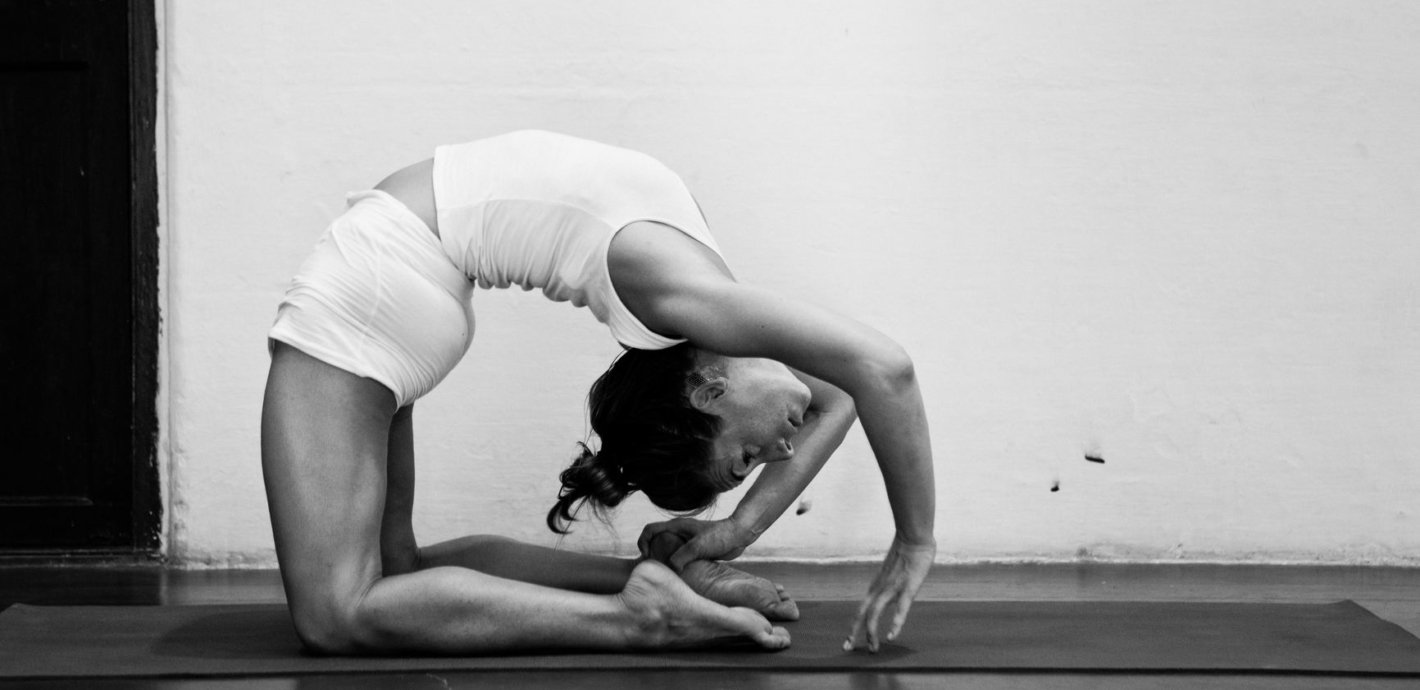America, we’ve got a back problem. This isn’t anything new, but theories about the source of the problem and how we treat the discomfort are. Some treatments have proven to be disastrous, while others have proven to be miraculous. When my lower back became inflamed, seized, and stiff for more than two years, I began an odyssey that led me down a path that can only be described as empirical.
Nothing snapped, nothing tweaked, nothing I did out of the ordinary could be traced back to why my back began to act up. Hot to the touch, right above my iliac sacrum, overnight I couldn’t bend forward or backward without serious suffering. Staying in Mysore, India at the time and practicing yoga, which has been a normal routine of mine for over a decade, I engaged in a series of Ayurvedic treatments, but they didn’t make a dent in alleviating the pain.
As a former lawyer, I’d read countless medical malpractice depositions involving back surgeries that went wrong and had an appreciation that back problems had a high potential for serious longterm quality of life issues. The takeaway was to avoid any knife to my back, and so from the beginning, I knew I had to understand what was going on from a holistic point of view.
Continual questioning did not make the matter any better. My once-invincible yoga practice was now forever altered. I say that tongue-in-cheek, but the realization and process to physical downshifting overnight is to have a source of enjoyment be largely compromised. That news is never good. While I still had overall good health and all the good fortunes that I could be grateful for, the transition into attending to my back as a limitation (instead of a bendy thing of joy) had to be done with measure and calm. So I did what any modern human does, I took to the Internet.
Good grief. The more I read about the back, spine, L5s and S1s, the more pictures and diagrams and videos that I viewed, the more vertigo I got. The body is truly a code I can’t crack. Even most doctors can’t crack the back, and when reminded of my early legal beagle days and the harrowing back hacking that I read about in the medical malpractice depositions, a level of abject confusion overcame all noble intentions.
It crossed my mind a few times to blame the pain on something other than my physical limitations, and so, in these moments, the villain became yoga itself.
Never mind that up until the point of back arrest, I was still doing aggressive bending, grabbing my calves, sometimes a little higher up my leg, as I approached my fifth decade on this earth. Any rational person would tell you that’s simply unwise at that age, perhaps even reading this, you want to look away, like one would passing a car wreck on the highway. But so far, my body had played nicely and now I had to face that age could be a factor.
So I retreated. I did what I thought was the responsible thing and stopped attempting any pose that required the slightest bend. For five months, I laid off, yet my back didn’t get any better. In the mornings, I couldn’t get out of bed without pain; I bent down to pick up my shoes like an octogenarian, and the simple act of laughing, sneezing or coughing came with a thundering crash of lightning around the sway of my back that felt like an electrical jolt.
My MRI didn’t show anything that was near equal to the pain that I was experiencing: a slight disc bulge and some arthritis. But the torment that I felt seemed as though the spine had been cemented and then bulldozed. My doctor said never to do that when I showed him a picture of kapotasana, a deep backbend pose. Yet, strangely, my desire to return to that pose was one of the things that eventually healed me the most. Of course, it didn’t happen over night.
Related: Can You Be Too Flexible? Hypermobility, Explained
Edging into the dark behavior of disregarding my pain with what the doctor said to avoid happened incrementally, mostly due to fear and hyper-vigilance to avoid additional pain. Yet, in kapotasana, as I bent backwards and pushed through the pain, the remarkable result was that afterwards, it didn’t create more pain. In fact, it felt better. Not a lot better, but there was some relief the more I did the pose. This led me down another avenue of research. No longer did I back off of poses that I had previously steered clear of. They were not pain-free, but they were definitely, and inexplicably, minimizing the overall agony.
This new phase of empirical research arrived on the beginning of a different trip to India working with my teacher, R. Sharath Jois. Sharathji’s studied, careful assists in back bending allowed me to feel completely safe. As I released my fears, I drifted backwards as he placed my hands on my ankles through what had previously been an impossible proposition. When I left these practice days and did not suffer the same amount of pain, this spoke loudly: The back did not need to be shuttered.
Working with Sharathji gave me the confidence to hear and heal my body. Soon, I was no longer inadvertently adding to the stiffness, but working with what I had to re-engage that muscle movement that had been eschewed due to fear. In fact, laying off did nothing positive for my physical condition. By re-engaging, my pain had minimized by perhaps 10 to 20 percent, but the important note directed me down a different path of research: the mind.
When I was growing up, a neighbor down the street had a father who had a “nervous breakdown,” whatever that hushed term meant exactly. That was some time in the 70s and then, in the 80s, it seemed that no one talked about breakdowns anymore. Adults and people on television complained about ulcers, which didn’t carry a stigma and, therefore, had a higher acceptable decimal level and healthier national discussions around relief ensued, like better diets and exercise. In the 90s and onwards, people talked less about ulcers mainly because pharmaceuticals were zapping them to bits, but unfortunately, stress has never been completely eradicated. In fact, modern medicine has yet to dominate the will of the human body.
When we experience stress, the body will absorb it and find an outlet of some sort, be that a skin condition, through the gastrointestinal track, to depressing the mind, to list a few. No matter how hard we try, if stress remains, it will morph into and appear in different physical forms, leaving sufferers and the medical profession to shift into, and away from, evolving remedies and placating techniques, like fashion trends.
The ingenuity of ridding stress from our everyday life has exploded into a profitable industry of stress reducing diets, lifestyles, teas, exercises, books, spas, body oils, you name it. Though I was too young to have brushes with nervous breakdowns or ulcers, I have had IBS, or irritable bowel syndrome, which is most likely a descendent of the ulcer, as it deals with inexplicable digestive issues. Not to mention, I’ve experienced back pain that does not equal the register of results found on an MRI; mysterious aches and pains, I’m now convinced were stress-related. Ultimately, I figured whatever attempts I made to rid the body of stress, the body had the last word.
Related: The Simple Solution to End Chronic Pain
Unbeknownst to me, this budding hypothesis came prepackaged and delivered on a plate following a dinner with New York friends who have high-stress professions. They told me about the late John Sarno, MD, a professor of Rehabilitation Medicine at New York University School of Medicine and physician who diagnosed “tension myositis syndrome” (TMS), a psychosomatic illness which caused chronic back, neck and limb pain.
During his nearly 50-year-career at NYU, Sarno’s mission was to educate patients on the psychological and emotional aspects of their pain and symptoms, which are an unconscious “distraction” that represses unconscious emotional issues. Sarno believed that the mind will try to repress emotions that the unconscious can’t, thus, funneling pain to the physical body. When the stress is seen as what it is, the symptoms serve no purpose and (miraculously) go away. It’s like a sneaky deal the body makes with the mind.
On a long plane ride home from London to LA, I read Sarno’s book Mind Over Back Pain and decided to test out some of his theories. Namely, I talked to my body differently. For example, I decided that when I coughed, I wouldn’t wince in pain. Miraculously, the pain went away. Similarly, I had been bending over in a protective stance and stopped doing that. These tricks were attempted and preformed successfully in one go. There was no doubt that my back pain was partly, if not mostly, due to some emotional pain that I was experiencing at the time.
Yoga as the villain did not last long either—although, would I have had the back problems if I didn’t do crazy backbends? I can’t answer that but I do know that the remedy was to not fear pain serving as a distractor and not add tension. The moment that I understood how to communicate with my body and how to value or discard certain tension causing thoughts, the pain lessened.
Two years later, I continue to feel tightness in my back, but on a scale of one to 10, it’s a one, whereas before it was a nine. I can live with a one, and I continue to work in the fashion Sarno wisely advocated. I also take care to live a balanced, low-stress life when possible and try not to hold onto tension. Mostly, stress cannot be avoided for me right now as I’m not a fully realized person, but I do hope that my research on this earth continues to lend itself to breakthroughs.
Yoga and bending backwards has led me down an unimaginable series of questions and answers. Working through the pain got me to the other side, and now my back is again more flexible. Age is another inevitable kink. How long can the back reverse its course away from gravity’s pull forward? I have no idea, but the combo platter of choice seems to be understanding where insidious stress hides in the body and not be an age denier. Somewhere in the middle is a full-meal deal where my body is stretched and strengthened and stress sustained and maintained as best as it can.
The spirit is undeniably strong and despite the common phrase “mind over matter,” in the long run, the mind does not triumph over body, but the indomitable spirit can. When we continue to do what we love and do it with care and consciousness, avoiding traps of fear by listening to the body, we can minimize creating a cycle of tension and fear.








Comments (0)